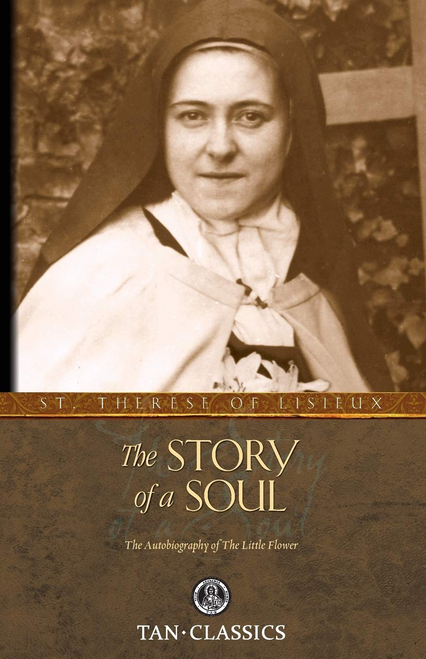"Be not afraid to tell Jesus that you love Him; even though it be without feeling, this is the way to oblige Him to help you, and carry you like a little child too feeble to walk."
The Story of a Soul, better known to the English public as The Autobiography of St. Thérèse of Lisieux, was first published in 1899. Today it ranks amongst the greatest Christian spiritual classics and it has been translated into practically every well-known language. Almost every pope since its publication has proposed St. Thérèse's teaching to the faithful for their imitation—Pius XI declared her the greatest saint of our age and John Paul II made her a Doctor of the Church.
The Story of a Soul possesses in some degree a characteristic common both to the Gospels and The Imitation of Christ. Men and women open the book, often quite casually, and are caught by the vivid clarity or simple profundity of some sentence in such a way that their lives are completely changed. The style of St. Thérèse is extremely simple and spontaneous, having a charm that is hard to describe, especially when she rises to poetic heights. The final chapter, written for her eldest sister Marie, is simply a childlike outpouring of her heart to Jesus Himself. This spiritual classic will speak gently to your heart.
All the same, partly on account of St. Thérèse’s great popularity, one or two matters in connection with her spirituality are in need of some clarification. St. Thérèse was of a poetical cast of mind, and some of her expressions inevitably reflect the sensibility of her background – which is to say, the Middle Class French culture of the late nineteenth century. Thanks to this and the sentimental excesses of some of her admirers, she is still too often associated with a cloying sentimentality which is, in fact, far removed from her spiritual realism, her great strength of character, and her considerable stock of humour and common sense. Equally misunderstood to those who are insufficiently familiar with her writings, is the nature of the Little Way. As Dom Cuthbert Butler has written:
[I]t is to be emphasised that, strangely different though she was from St. John [of the Cross], and even from St. Teresa the Great, it was on their writings and spirituality that she was nourished and formed…. Her own desire was that it should be widely known that “holiness is accessible to all sorts of people,” and this without doubt is the lesson of her life, and the key to her popularity among men and women of all sorts. Her “little way” is, needless to say, a very big way. It lay essentially in this, that she really, fully, and effectively learned and lived up to St. Teresa’s great slogan of renouncing our own will and conforming it in all things, to the will of God; a lesson it is felt that may be in good measure learned and practiced by all men of good will in any station of life.
St. Thérèse de Lisieux (Sister Teresa of the Child Jesus) was born at Alençon, France, on 2nd January, 1873. She was the ninth child of saintly parents, Louis and Zélie Martin, both of whom had wished to consecrate their lives to God as religious. The vocation they had been unable to pursue was given to their children, five of whom became religious, one to the Visitation Order and four in the Carmelite Convent of Lisieux. Brought up in an atmosphere of faith where every virtue and aspiration was carefully nurtured and developed, her vocation manifested itself when she was still only a child. Educated by the Benedictines, when she was fifteen she applied for permission to enter the Carmelite Convent, and being refused by the superior, went to Rome with her father – who was as eager to give her to God as she was to give herself – to seek the consent of the Holy Father, Leo XIII, then celebrating his jubilee. He preferred to leave the decision in the hands of the superior, who finally consented and on 9th April, 1888, at the unusual age of fifteen, Thérèse Martin entered the convent of Lisieux where two of her sisters had preceded her. She died at Lisieux on 30th September, 1897.
The account of the eleven years of her religious life, marked by signal graces and constant growth in holiness, is given by Thérèse in her autobiography, written in obedience to her superior and published two years after her death. In 1901 it was translated into English, and in 1912 another translation, the first complete edition of the life of the saint, containing the autobiography, “Letters and Spiritual Counsels”, was published. Its success was immediate and universal, and it has passed into many editions, spreading far and wide the devotion to this “little” saint of simplicity, and abandonment in God’s service, of the perfect accomplishment of small duties.
The fame of her sanctity and the many miracles performed through her intercession caused the introduction of her cause of canonisation only seventeen years after her death. She was canonized on 17th May, 1925.
Robert Asch







